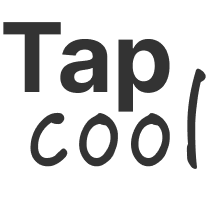Content sets the tenor and tone for how a brand communicates with customers, prospects, and search engines. The top three things it must do are:
1. Establish Foundational Domain Authority
Allow customers to learn about the brand and product offerings with accurate, clear, and informative product content, related content, and proof points.
2. Deepen Emotional Connections
Reveal a company’s values and reason for being. Help customers feel like they are part of the brand’s community (“this company gets me. I align with their values.”). That’s why it’s important to weave brand storytelling throughout your site, even in subtle ways during the e-commerce flow.
3. Engender Loyalty / Elevate Brand as a Trusted Partner
Provide helpful support in a customer’s time of need. Make sure users can complete all key tasks on the website, whether it’s buying a product, entering sweepstakes, uploading user-generated content, or finding the answer to a question.
Why Adopt a Content First Mindset?
A content-first approach ensures the following areas are considered during the upfront content planning process before designing and building a new website, and after.
1. Content Is Aligned with the Brand’s Goals. Ensure all content is on-brand and meets the business and brand strategy.
2. Content Meets the Users’ Needs. Ensure all content is tailored to the right audience(s) and facilitates their journey.
3. Content Speaks to Robots. Ensure all content is marked up for search engines and desired distribution channels.
4. Content Works Across Devices / Is Accessible to All. Ensure content works across all devices as intended and meets all required accessibility standards.
5. Content Is Structured for Personalization / Syndication / Re-usability / Translation. Ensure content is structured and modeled for re-use.
Content Strategy Throughout the Life Cycle
1. Discovery – What problem are we trying to solve? How might content help solve the problem? Tactics such as the creation of discussion guides, user and stakeholder interviews, personas, journey maps, and the participation in or review of in-person observations, survey results, and analytics are all essential parts of content discovery.
2. Competitive and Parallel Brand Analysis – What are others doing in the space in terms of content creation, cadence and conversion?
3. Content Audit / Gap Analysis – What content do we have along the customer journey? How can we close the delta between what we need and what’s missing?
4. Opportunity Assessment / Experience Definition / Content Strategy Vision – What are the big strategic content opportunities in this design project? How can we create user stories and inform the prototypes to reflect these content opportunities?
5. Voice Chart / Messaging Architecture / Visual Guidelines – How do we say it? Where do we say it? When do we say it? What does it look like? How does it make the customer feel? How can we partner with visual designers to help them express and enforce visual guardrails that reinforce the content strategy?
6. Prototype / North Star Phase – As noted in step 4, how will content inform the new design? What did we learn from the discovery that must be expressed in the prototype? What mechanisms are available to model future state content in the prototype?
7. Information Architecture / Site Map / Navigation – How will this experience be structured and come together coherently for the user to find what she needs, no matter the entry point?
8. Page Tables for Template Requirements / Purpose of Page Exercises – What content needs to appear throughout the experience and, specifically, what content needs to be associated with which sections and layouts to establish consistent content hierarchies?
9. Content Guide With Component Definitions / Template Definitions – How do we allow business owners within the company to create on-brand and on-strategy content for the website? How does a content author build a new page?
10. Content Requirements / Sprint 0 Planning – How do we make sure that all content requirements are backlogged and incorporated into the development process?
11. Content Matrix / Pages to Create / Ownership – How do we track all the pages in the new website and establish section and page ownership?
12. Editorial Calendar / Workflow Definition / Governance – What new content will I create and how will the production process be governed? How will it be passed down for translation? How will it be localized?
13. Copy Deck Creation / Copywriting / Content Creation / Production – How do we create new content?
14. Test / Measure / Learn / Rewrite – Is the content working hard enough for the business and how do we establish metrics to measure its effectiveness?
